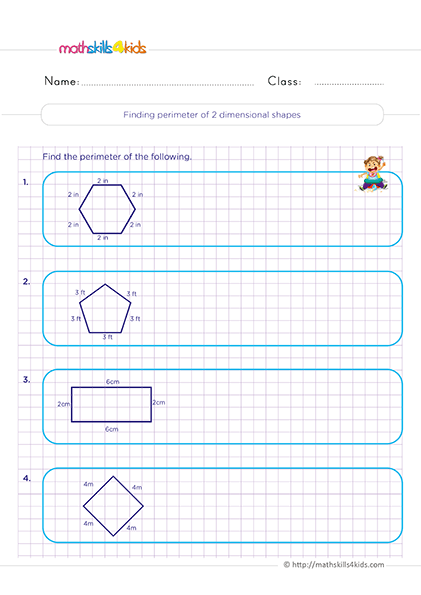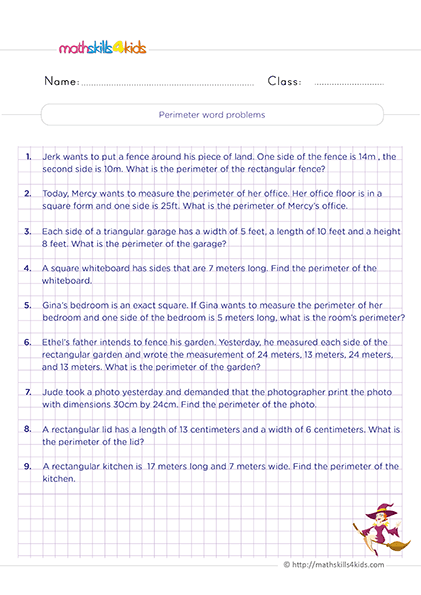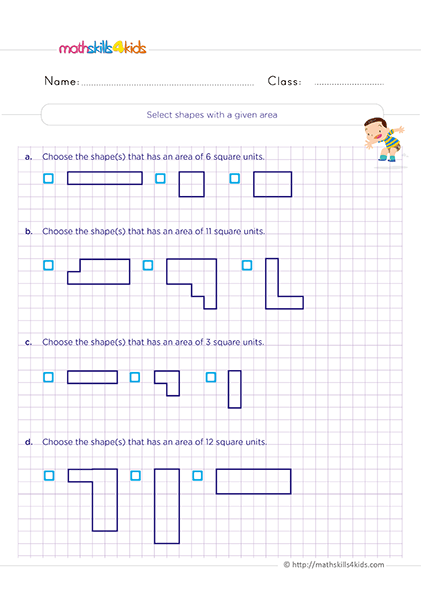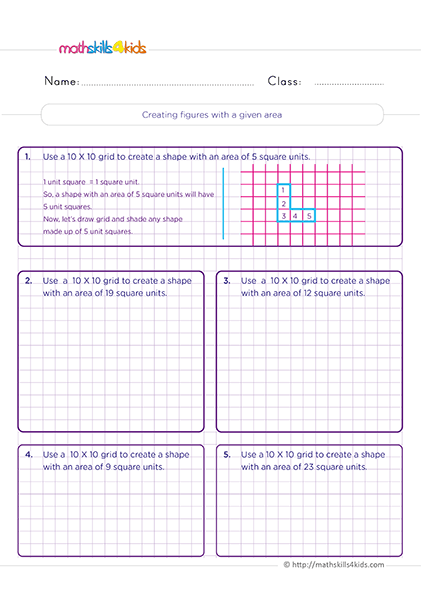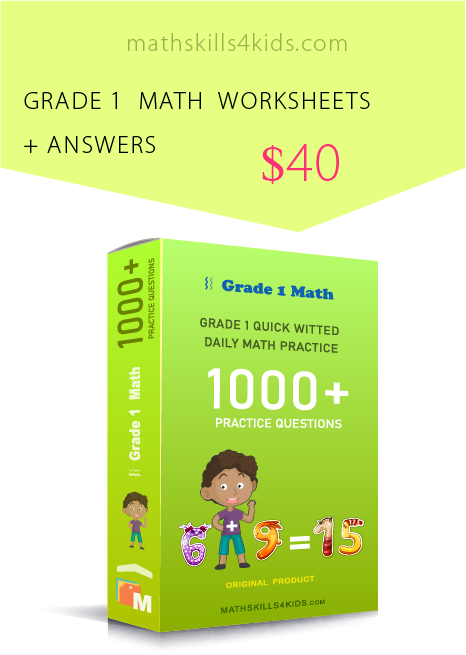Geometric measurement activities for Grade 2: Perimeter and Area
Hi there! Welcome to this fantastic resource, where we'll share fun and engaging geometric measurement activities for Grade 2 students. Geometric measurement is a topic that involves learning about the perimeter and area of different shapes.
-
This article is a trusted guide that will make learning about perimeter and area a fun and enjoyable experience for your kids. In addition to this, our awesome selection of Mathskills4kids printable geometric measurement activities will provide you with everything you need to teach your kids perimeter and area.
Perimeter is the distance around a shape, and area is the amount of space inside a shape.
Why geometric measurement is fun and important for second graders
Geometric measurement is fun and important for second graders because it helps them develop their spatial reasoning skills, understand how shapes relate to each other, and apply math concepts to real-world situations.
In this article, we will show you four awesome Geometric measurement activities you can do with your second graders to explore the perimeter and area hands-on. Let's get started!
-
BROWSE THE WEBSITE
-
DOWNLOAD FREE WORKSHEETS
-
-
2nd GRADE MATH TOPICS
- Counting and numbers
- Comparing and ordering
- Reading and writing numbers
- Shape patterns
- Adding of 1-digit numbers
- Subtracting of 1-digit numbers
- Additing 2-digit numbers
- Subtracting within 2-digits
- Up to 3-digit addition
- Subtracting within 3-digit
- Properties of addition & subtaction
- Mixed operations
- Place-value
- Estimating and rounding
- Logical reasoning
- Money Math
- Telling Time
- Data and graphing
- Units of measurement
- 2D shapes
- 3D shapes
- Geometric measurement
- Fractions
- Probability
- Multiplication
- Division
-
-
-
Activity 1: Exploring perimeter with paper strips
In this activity, you will need paper strips of different colors and lengths, scissors, glue, and a ruler to explore perimeter. The goal is to create different shapes using the paper strips and measure their perimeters.
Here are the steps:
- Cut out some paper strips of different colors and lengths. You can use a ruler to measure them or estimate them.
- Choose two paper strips of different colors and glue them together at one end to make an angle.
- Repeat with two more paper strips of different colors and glue them together at one end to make another angle.
- Glue the two angles together to make a four-sided shape. You can make any shape you want, such as a square, a rectangle, a trapezoid, or a parallelogram.
- Measure the perimeter of your shape by adding up the lengths of all the paper strips. You can use a ruler or count the units on the paper strips.
- Write down the name and the perimeter of your shape on a piece of paper.
- Repeat with different combinations of paper strips to make more shapes and measure their perimeters.
-
Activity 2: Measuring area with unit squares
In this activity, you will need some unit squares of different colors and sizes, scissors, glue, and a sheet of paper to measure the area of different shapes.
A unit square is a square that has a side length of one unit, such as one inch or one centimeter. The goal is to cover different shapes with unit squares and measure their areas.
Here are the steps:
- Cut out some unit squares of different colors and sizes. You can use a ruler to measure them or estimate them.
- Choose a shape that you want to cover with unit squares. You can draw your shape on paper or use one of the shapes you made in Activity 1.
- Glue the unit squares on top of your shape so that they cover it entirely without overlapping or leaving gaps.
- Count how many unit squares you used to cover your shape. This is the area of your shape in square units.
- Write down the name and the area of your shape on a piece of paper.
- Repeat with different shapes and unit squares to measure more areas.
-
Activity 3: Comparing the perimeter and area of different shapes
In this activity, you will need some shapes you made in Activity 1 and Activity 2, a sheet of paper, and a pencil. The goal is to compare the perimeter and area of different shapes and see how they change when you change the shape or size.
Here are the steps:
- Choose two shapes that have the same perimeter but different areas. For example, you can choose a square and a rectangle with the same paper strip length but different unit square counts.
- Write down your two shapes' names, perimeters, and areas on the paper.
- Explain why they have the same perimeter but different areas. For example, you can say that they have the same perimeter because they use the same amount of paper strips, but they have different areas because they use different numbers of unit squares.
- Choose two shapes that have the same area but different perimeters. For example, you can choose a square and a rhombus with the same unit square count but different paper strip lengths.
- Write down your two shapes' names, perimeters, and areas on the paper.
- Explain why they have the same area but different perimeters. For example, you can say that they have the same area since they use the same number of unit squares but different perimeters because they use different amounts of paper strips.
-
Activity 4: Creating and measuring your shapes
In this activity, you will need some paper strips, unit squares, scissors, glue, a ruler, and imagination. The goal is to create shapes using the paper strips and unit squares and measure their perimeters and areas.
Here are the steps:
- Cut out some paper strips and unit squares of different colors and sizes. You can use a ruler to measure them or estimate them.
- Use the paper strips and unit squares to create your shapes. You can make shapes like stars, hearts, letters, or animals. Be creative!
- Glue your shapes on a sheet of paper.
- Measure the perimeter and area of each shape by using the methods from Activity 1 and Activity 2.
- Write down your shapes' names, perimeters, and areas on paper.
-
What we have learned and how to apply it
This article has taught us many things about geometric measurement, perimeter, and the area of different shapes. We also did four fun and engaging activities to explore these concepts hands-on.
Geometric measurement is not only a math skill but also a life skill. We can use it to measure things around us, such as rooms, furniture, walls, floors, carpets, windows, doors, etc.
We can also use it to design and create things, such as art, crafts, models, buildings, etc. Geometric measurement helps us understand how shapes work and how they fit together.
It also helps us develop spatial reasoning skills, which are important for solving problems and thinking logically.
Bonus: Find more resources to reinforce geometric measurement learning in second Grade here!
If you enjoyed this article and want to find more resources to reinforce geometric measurement learning in second Grade, you can check out these links:
- https://www.education.com/worksheets/second-grade/geometry/: This website has a lot of printable worksheets on geometry topics for second-grade
You can find worksheets on identifying 2D and 3D shapes, symmetry, fractions, perimeter, area, etc.
- https://www.k5learning.com/free-math-worksheets/second-grade-2/geometry: This website has another set of free math worksheets on geometry for second-grade students. You can find worksheets on composing and decomposing 2D shapes, congruent shapes, lines of symmetry, edges and vertices of 3D shapes, and more.
- https://www.khanacademy.org/math/cc-2nd-grade-math/x3184e0ec:geometry: This website has a series of online videos and exercises on geometry for second-grade You can watch videos on basic properties of 2D shapes, partitioning shapes into equal parts, identifying halves, thirds, and fourths of shapes, measuring length with different units, finding the perimeter of polygons, finding the area of rectangles by counting unit squares or multiplying side lengths.
Thank you for sharing the links of MathSkills4Kids.com with your loved ones. Your choice is greatly appreciated.
We hope you enjoyed our geometric measurement activities for Grade 2 and learned something new about perimeter and area.
We also hope you will visit our website, Mathskills4kids.com, for more fun math and geometric activities with your second graders.
Geometric measurement is a fascinating topic that can spark curiosity and creativity in young learners. It can also help them develop important math skills they will use throughout their lives.
Thank you for reading our article, and stay tuned for more!
-
